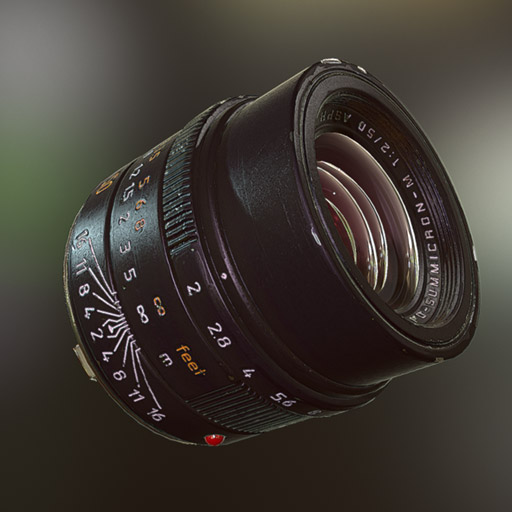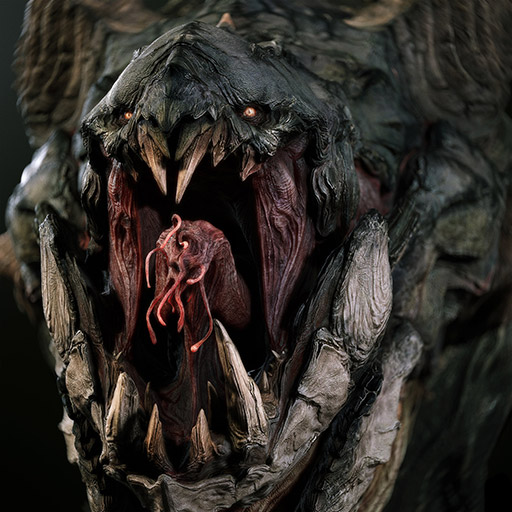
Over the past 9 months or so, I’ve been part of a small CGC team that is focusing on making games with Blender and Unity. This is a new push for us since traditionally we favor movie/FX workflows and techniques on the Blender side. The push was motivated by a survey where we polled our users and a significant majority desired 3D training in the context of game development rather than the context of movies/animation/VFX.
NOTE: 3D production is commonly categorized into either “game production” or “everything else”. Where “game production” is pretty obvious and “everything else” includes movie VFX, feature animation, commercials, architectural visualization, etc. Another way of looking at it is “game production” involves real-time rendering and “everything else” involves non-realtime rendering - or “offline rendering” - like Cycles. For the rest of this article, I’m going to refer to the “everything else” category as “animation” for clarity’s sake.
My background is animation. When I was in college, game students and animation students shared the same classes until about halfway through each degree. At that point, the degrees forked and students had to choose the path of either game dev or animation. I chose animation and my career from then on has been in that vein, from TV commercials to VFX to animated feature film. I brought that context with me into my training for CG Cookie. So when the survey revealed our community’s desire for games, I was surprised and a little skeptical of the shift.
But I’ve been very surprised by the past 9 months. Making games is a ton of fun! In fact - can't believe I'm saying this - I even think games are more fun to make than movies. Here’s why:
1. Real-time is a real good time.
I’ve spent my entire 3D career waiting minutes and hours to render one image as well as days to render short animations. So for the animation side of 3D, patience is not just a virtue; it’s a requirement
But with the game work I’ve been doing lately, there is no waiting. It’s happening before my eyes in real time. “Well sure, but the visuals aren’t even comparable to offline renderers,” says the year-ago-version of myself. Because offline renderers do true, physically accurate calculations of light and materiality. And for decades real time computing was only capable of flimsy illusions to approximate those calculations which looked really bad by comparison, at least in terms of realism.
Well. Modern real time computing is so convincing, it’s made this skeptic a believer. The dawning of heralded “PBR” tech has ushered in a stunning level of realistic lighting and materiality to the world of real time. This means I can create the [majority of] realistic visuals that I aspire to in real time rather than only being able to do that with offline rendering.
This is a huge game-changer that has only been true in recent years. Click these thumbnails to see some of the realtime magic I'm talking about:


2. Interactivity means more bang for your buck.
Everything about movie VFX, animated films, and TV commercials is ultimately about making something look great according to one camera angle. That’s a pretty small payoff for the effort that goes into building that something.
Any modeler knows what I mean: When you spend a month building a badass character, you can’t just post one image of it online, right? You have to post a series of various angles or a even a turntable. Because you know the effort you spent on the whole character, backward and front, and one angle simply doesn’t do it justice.
With games, the effort you spend building a world is rewarded by you and/or players being able to view that world from every angle, for as long as they play the game. For me, that’s proven to be a much more satisfying reward.
Don’t get me wrong, I’m not knocking movies - I LOVE movies! And to conceptually compare them to games is a little bit “apples to oranges”. But in comparing my effort as a 3D artist contributing to a game or contributing to a movie, they’re very similar efforts. Which is where the point comes in: Games deliver a better reward for a comprable effort.
3. Limitations are fun.
From a 3D artist’s perspective, the most obvious difference between game production and animation production is the restrictions. Game assets are restricted to maintain real-time performance while animation is largely free and limitless but with the cost of render time.
I used to think limitations - like keeping models lo-poly and relying on normal maps - was more lame than it was cool or fun. But as it turns out, it’s kind of a fun puzzle! Figuring out the balance of polycount and normal/texture detail is an entertaining, new dynamic to my 3D creation process.
For one, if done right, the difference is surprisingly negligible. And secondly, the limitations are what enables the real-time-ness of it all. Whenever I’m testing an asset in-game and playback is choppy, then I optimize the it, throw it back into the game, and the game runs smoothly - that’s just a great feeling. One I didn’t expect.

Yeah, well, that's just, like, your opinion, man.
Indeed it is. Despite my strongly opinionated approach, I’m not actually declaring that making games is objectively more fun than making movies. This article is merely my way of expressing the enjoyment I’ve discovered with game development in spite of initial skepticism. And besides, games or movies is not even a this-or-the-other situation. Especially since each year the technological gap between them shrinks. I’m just glad to have my feet in both camps now. It's stretching and growing me into a better artist.
Frankly I have you, the CGC community, to thank for it! If you hadn’t requested game-related content, who knows if I ever would have gotten involved.
If you’re like the year-ago version of myself, a little skeptical of game production, take my word for it and give it a go. Now more than ever is a great time get your feet wet:

This post got me curious. Got my feet wet in Unity (more fun and easier than I expected). First simple normal-mapped asset looked stunning on screen - guess I'm "hooked". It seems like Blender+Unity is a killer combination; nice that CGC covers both.
https://www.shine.com/job-search/game-jobs">Games are one level up than movies. Games not only boost you mentally but also gives you plenty of time to relax from boring routine.
@jonathanwilliamson
Not only are the two converging but the backdrop and the location of film and games are changing as well.
Apple has released AR as well as many other companies with mixed reality applications.
https://www.microsoft.com/en-us/hololens/apps/roboraid
I've played this game on a MS Hololens and thought it was awesome!
Hello everyone I might do not have much experience in game design itself, but some other point to think about when telling a story through animation or games is the design itself. The way we or the developer of the scene or level create unique designs to place emphasis on what we are trying to tell. Animation tells a story through animation of course, while on the other hand, games tell a story through interactivity. I do not know much about how the process of animating a story through animation goes, but to support game designer on telling their stories, games as medium is one of the only ways we can be part of. Ill let you guys be the judge please watch this video https://www.youtube.com/watch?v=NyMndWpihTM
nice article, yes, I think that the Realtime tech nowadays is soo good, that you can create short films without waiting for the render, amazing! and the interactivity of the game creation is so rewarding!
EEVEE is a game changer for blender, I will have no problem in creating animation short films without the waiting time,
@theluthier I really like the idea of having the advantage of real-time for the 3D creative side and a mixed workflow, having high-res models with all the usual tip top topology goodness, one that can serve for showcasing, close up shots, artworks and bragging rights. Then a version optimized for low poly that relies on normal maps, that can be game ready and software friendly.
Ever seen or used Element 3D in After Effects? It is an awesome, really awesome plugin that lets you have 3D elements inside After Effects and you can render in real time. To avoid days of render time I always jump through hoops to get my 3D models into Element 3D in After Effects ... if you haven't seen it, search for it on YouTube, see it in action, it is great. I bought it a long time ago without hesitating.
So I get the appeal that games offer with the real-time rendering, along with all the other benefits. For me personally there isn't much to do with having the skills of making a game, I wouldn't get a single job here where I live doing that. That is one of the reasons I have been reluctant in going all-in into Unity. But I can see the advantages of at least getting familiar with the context of the gaming workflow, the terminologies, PBR, limitations, gotchas in normal map baking, etc. And since it is an ever evolving and rapidly growing side of computer graphics, I guess it is worth investing time on learning it.
I was interested in the article where it says that game students and animation students share the same classes until halfway through their degrees, then it diverges. I guess that's why I've never again seen a in depth tutorial here on CG Cookie about compositing, the way Bartek Skorupa used to do, or camera tracking, like the ones from Sean Kennedy, or integrating 3D elements with real life footage, or rigging and how to manipulate color, understanding midtones, highlights, shadows, gamma, gain, white level and black level rules, color grading to get a film look, alpha channel gotchas, render layer, render passes, etc. I suppose that is where the gaming and animation classes branch off. But I miss all those tutorials because I find all those subjects really important when it comes to making an appealing artwork.
We all get frustrated when we've made an awesome model, materials are good, textures are good... but then, when it comes to hitting render, the artwork lacks appeal, for some reason it isn't working... there is no composition and our hard work falls short at the end. I suspect Composition is the master that has the last say, there is a lot at play when it comes to composition. So the gaming branch goes very technical but greatly omits parts that might be key on making you God of the Pixels.
Side note, this dude makes good stuff controlling pixels:
http://www.learnphotoediting.net/index.html
So does this girl:
http://www.reneerobynphotography.com/before-after/#!
To @jonathanwilliamson 's point, the two industries are absolutely converging with things like the ADAM short. How exciting is that!
But don't worry - we're not discontinuing non-realtime education like Cycles rendering, render-passes and compositing. We will certainly do more of that in the future. On that note, are there things you want to learn about those subjects that aren't covered in existing training?>/strong>
@jonathanwilliamson @theluthier So probably soon, or even right now, I can surely use the gaming workflow in animation. Using a real-time render engine like Unity I can make a small movie, play it in the viewport and OpenGL it straight out without having to wait days and wasting a lot of computing power.
I saw the short animation ADAM the other day, I was mind blown that it was done real-time in Unity, I kept thinking "So you're telling me that video didn't have to get render and wait a lot for one frame... that is real-time, I could find another camera angle in a second and then it's just as simple as hitting play again" I'm like the year-ago Kent, skeptical of game production, that is like black magic.
One question comes to mind, do I have to know all the know hows of making a game in order to get a small animation done in Unity in real-time? Because I assume I don't have to control the character as in a game to make the animation, nor program any AI or make it interactive with a player.
And how do I tweak things? I mean do I have access to render passes? Do I have 32 bit float files that can hold a lot of dynamic range? Do I get to make compositing on the frames?
Kent you made the article! That's awesome! :D
I see what you mean, the alleviation that is the gaming workflow approach from the common hurdles of the typical animation/VFX pipeline is very appealing. It must be like stepping into a land were suddenly you don't have to iron your clothes, the messy wrinkles are actually encouraged, fast food is really fast and actually healthy for you and not having the structure of a handsome dude gets you all the chicks. The good life!
I think the main thing I can't shake off my head is how in the gaming workflow, I can't have that sweet high-res close ups were you can appreciate the detail you've put into something. I mean, the pain that is to make a perfect topology model, only to use it as a stepping stone kinda breaks your brain a little. It was hard to see the Robot Character get sculpted, carefully retopologized and then... demolished by kit-bash! If the ESRB rated the tutorials, that was a Rated R for graphic explicit content. ;)
The idea that I like the most is real time rendering, it must be a bliss, everything about it resonates happiness, now I wont settle for less, give me all the peace and joy in your mind, I want the peace and joy in.... (clears throat) I'd surely do more animations if I could render them out of Blender in real time, like Element 3D in After Effects. I think the EEVEE thing in Blender 2.8 will be great for that, it is dialing the viewport up to eleven. If it can output from the openGL all the render passes and 32 bit float files, oh my god that will be the glory!
I liked the movie/VFX approach that CG Cookie used to deliver, I haven't liked very much the gaming approach in tutorials, I feel it has left out major topics like compositing and render passes, tone mapping and color grading, which are really important when it comes to doing appealing artistic work. But I guess it is time to give it a shot. Probably what mostly holds people back is having to go back to square one and learning another software with another set of rules, the programming involved is scary and specifically for me, here in my country, there is no market for gaming. But I do like the idea of getting ahead of the curve because I hear people saying all the time that offline rendering will soon fade away, real time renders will get so good that they will render them useless.
Thanks for the article Kent, I guess I might as well finally summon the courage to devote time to learning Unity.